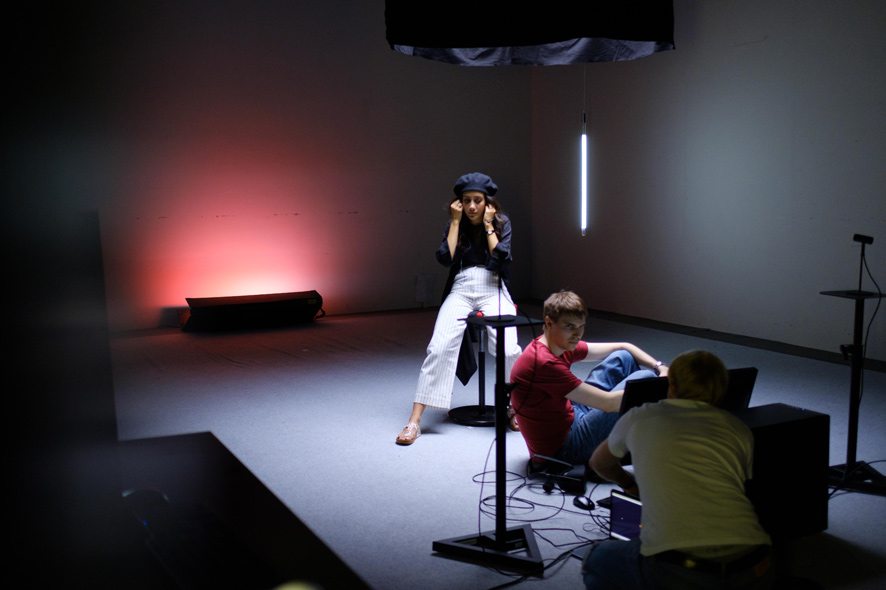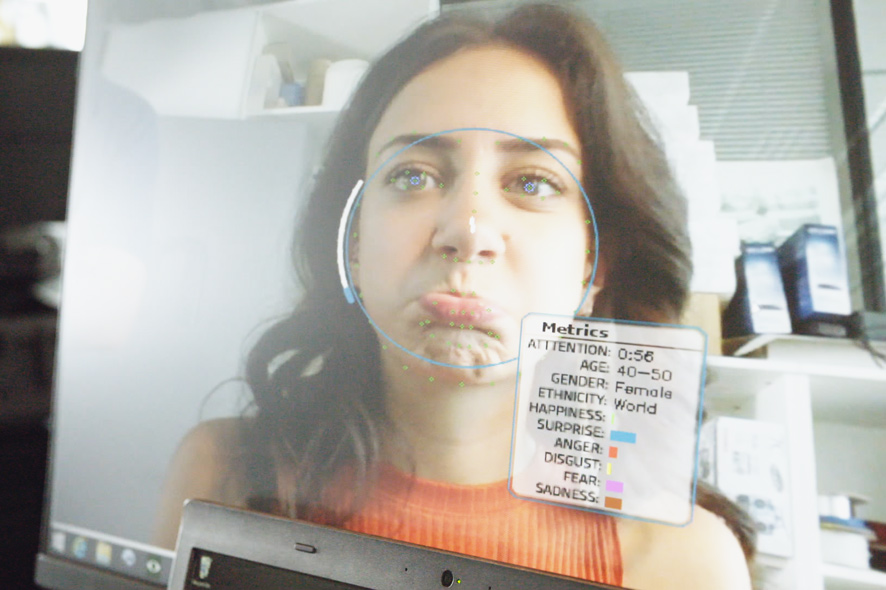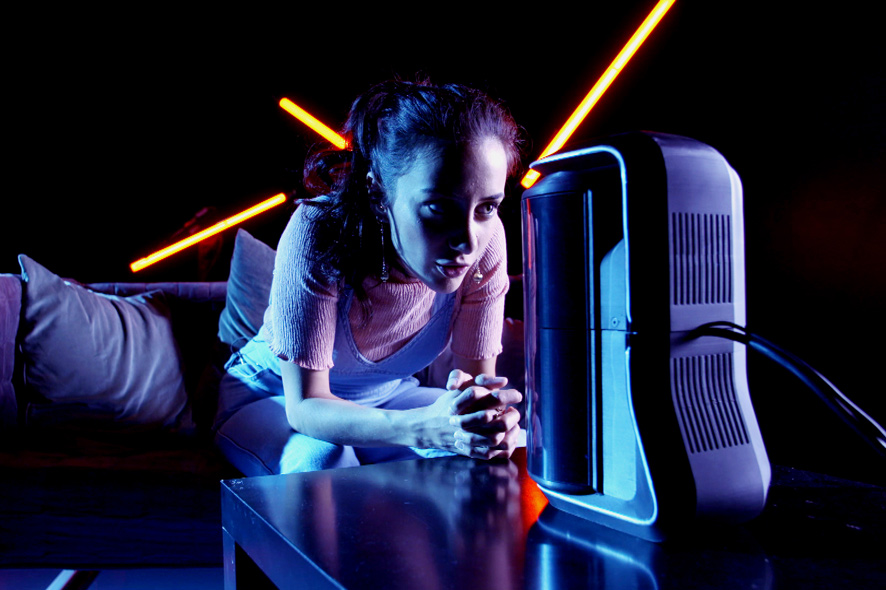How long will we actually still be human and what does the exponential growth of progress have in store for us next? Have we already begun to morph into a new species, Homo Digitalis? The Web series so named and produced by BR, ARTE and ORF consists of seven episodes (English subtitles) that go in search of answers to these questions by international experts in the field of futurology. The point of departure of this highly diversified tour featuring chief protagonist Helen Fares is the Ars Electronica Futurelab in Linz.
The Ars Electronica Futurelab was both the setting and scientific partner of “Homo Digitalis”. How did you support the film team in the making of this Web series?
Christopher Lindinger: We were delighted that Christina Miethge and Nils Otte’s production team got in touch with us at a very early stage of this production and that we could input our expertise right from the start. After all, the Ars Electronica Futurelab here in Linz is constantly at work on the development of future scenarios. But that wasn’t the only reason why we were immediately enthusiastic about the idea of this “Homo Digitalis”; what fascinated us most was the chance to present topics of such great relevance to humankind’s future in this format and to produce the project jointly. We accompanied the film team throughout the substantive development of the Web series, delineated the respective episodes’ topics, and discussed which experiments we would be conducting and which networks we could hook up with to find suitable dialog partners.

Helen Fares behind the scenes – and behind the façade of the Ars Electronica Center. Credit: Kyrill Ahlvers
A core element for us, though, was bringing to bear our insights and skills in creatively expressing futuristic concepts in tangible terms. Here at the Ars Electronica Futurelab, we develop prototypes for products designed to come on the market in a few years time, and we also create speculative projects because we want to find out how users react to them, what the keys to success are, where the difficulties lie, and so forth. This ultimately turned into an essential question of the entire Web series—or rather into the fundamental idea that protagonist Helen Fares won’t merely scrutinize the projects but rather always be involved in a personal encounter with such prototypes. In the very first episode of “Homo Digitalis” Helen meets her “virtual” girlfriend …
You mean the hologram of her girlfriend Josie…
Christopher Lindinger: Exactly. The inspiration for this experiment was GateBox, a Japanese project that already existed as a prototype. It provides you with a virtual girlfriend you can talk to. Before we launched a similar experiment with Helen, we showed her the video of this prototype so that she had a basis for comparison with what she would eventually confront. And that’s the extent of what we told Helen about this.
Finally, in our studio, she had half an hour to converse with her virtual girlfriend—who strongly resembled Josie—and to play with this prototype. We observed her reactions and wanted to know more about her initial impulses with this hologram. Naturally, we set up the experience in such a way that Helen could find it credible. For me, this was also one of the most fascinating experiments because her reactions here were the most powerful. Afterwards, it was incredible how many discussions we held about how far we can or should take this, about what feelings she developed towards this person despite the fact that she existed only virtually.

On set. Credit: Kyrill Ahlvers
What are some of the other experiments you conducted?
Christopher Lindinger: The primary aim of other experiments carried out here at the Ars Electronica Futurelab was to acquaint Helen with various technologies and to show her what’s already possible with them today. In the friendship experiment, we subjected her to the entire procedure without much advance knowledge and more or less left her to deal with it on her own. In the other experiments, we accompanied her and explained to her what can be done with these devices and what future prospects they raise. In one experiment, Helen donned a brain-computer interface and could steer a drone using only her thoughts; via a pair of VR glasses, she gave her own virtual concert before a live audience; and in the Ars Electronica Center’s BioLab, she learned to hack her own DNA, and tried out software that, on the basis of her facial expressions, can read her emotions and her moods literally from her eyes.

Scence of “Homo Digitalis”
The Web series’ primary aim is to answer a key question: What’s the Digital Revolution doing to us human beings? How do you regard this—How far removed are we from the species Homo Digitalis?
Christopher Lindinger: At the Ars Electronica Futurelab, our mission is to raise these very questions. But if you ask me personally, I’d say we’re already in the midst of this, perhaps in an early stage, but we’re already developing into Homo Digitalis. Consider, if you will, how tenderly we stroke our smartphones, how important technology has become for us, and what sort of feelings surface when you can’t find your smartphone a whole day long. That’s what makes it so important to address precisely this state of affairs. It’s simply a good thing to have this word Homo Digitalis.

What is already possible using facial recognition? Scene from the web series “Homo Digitalis”
“Everything that will be developed in the future can, after all, be configured by human beings. What we at the Ars Electronica Futurelab want is to give people a wake-up call and a thorough briefing about these issues so that we can discuss in a timely manner what we as a society really want to have and what we don’t want.”
After all, the technology per se is neither good nor bad. The only question is: What’s the use of it? With all the technology that we have at our disposal now, we experience on an ongoing basis that technology and our understanding of how to use it are developing faster and faster. This makes it even more important to conduct a social discourse. With Web series like this, we’re reaching new and different audiences. And, of course, that’s great!
NOTE: You can view all seven episodes of “Homo Digitalis” online at arte.tv with English subtitles or at www.homodigitalis.tv.

Christopher Lindinger studied computer science at Johannes Kepler University in Linz and cultural management in Salzburg. He then worked as a computer scientist in the field of supercomputer visualization in Chicago and as a freelancer in the computer games industry. His activities in the area of new technologies, digital culture and art already got him hooked up with Ars Electronica in 1997. He is currently head of research and innovation at the Ars Electronica Futurelab, moonlights as a consultant to private-sector firms and government agencies, and has been a visiting lecturer at several different universities.
